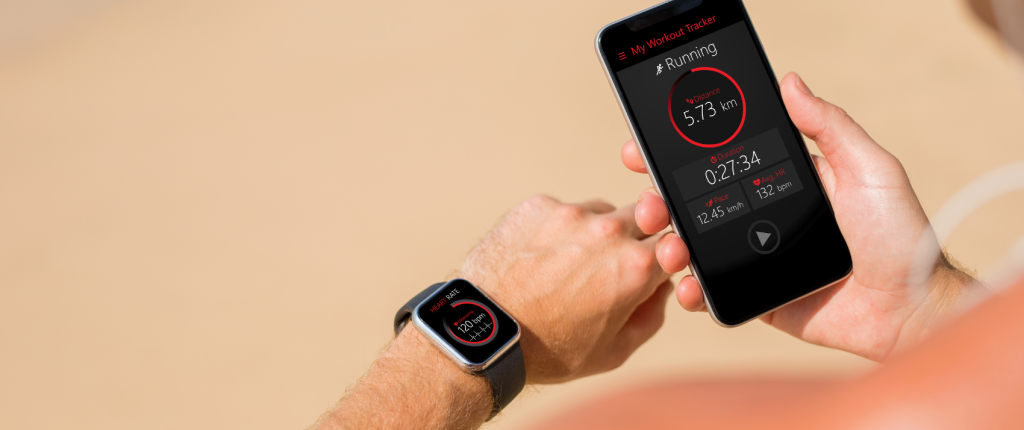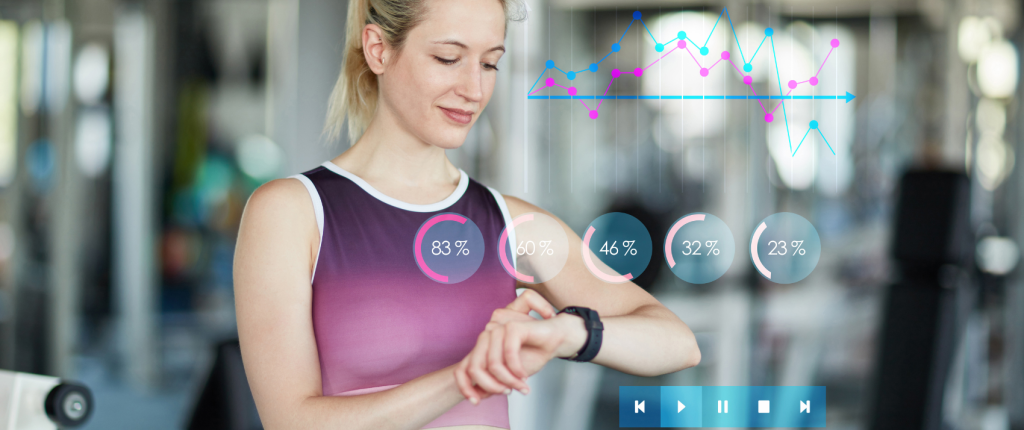In recent years, technology has dramatically reshaped the fitness industry, offering new tools, experiences, and opportunities for individuals seeking to improve their health and reach fitness goals. From the emergence of wearable devices to fitness apps and virtual training platforms, technology has made fitness more accessible, data-driven, and customisable. As we look at how the landscape has evolved, it’s clear that the integration of technology has forever changed how we approach fitness and wellness.
Table of Contents
1. Wearable Technology and Fitness Tracking

One of the most significant innovations in fitness technology is the rise of wearable devices. Fitness trackers and smartwatches, such as Fitbit, Apple Watch, and Garmin devices, have become everyday companions for millions of fitness enthusiasts. These wearables monitor a wide range of metrics, including heart rate, steps taken, calories burned, sleep quality, and even stress levels.
Wearable technology allows users to:
- Track Progress: Users can monitor their daily activity levels, workouts, and progress over time with precise data.
- Set Goals: These devices help users set fitness goals—whether it’s walking 10,000 steps a day, burning a specific number of calories, or completing a set number of workouts in a week.
- Motivation: Seeing real-time data encourages people to stay active, meet daily targets, and maintain healthy habits.
The personalisation and real-time feedback provided by wearables can help users better understand their bodies and refine their fitness journeys.
2. Fitness Apps for Personalised Training and Nutrition

The rise of fitness apps has been another game-changer. Apps like MyFitnessPal, Strava, Nike Training Club, and Peloton provide users with personalised workout plans, nutrition tracking, and even virtual classes. These apps allow users to access professional guidance without needing a personal trainer or a gym membership.
Here’s how fitness apps support individual fitness goals:
- Customised Workout Plans: Fitness apps can generate personalised workout routines based on a user’s fitness level, goals, and preferences, such as focusing on strength training, cardio, or flexibility.
- Virtual Coaches: Many apps offer virtual trainers or AI-driven coaches that guide users through exercises with instructional videos or audio cues, allowing for high-quality training at home or on the go.
- Nutritional Guidance: Apps like MyFitnessPal help users track their caloric intake and macronutrients, providing insight into their diet and helping them stay on track with their fitness and health goals.
With the variety of apps available, users can tailor their fitness experience to fit their needs, schedule, and resources, whether they want to work out at home, outdoors, or in a gym setting.
3. Virtual Workouts and On-Demand Fitness Classes

The fitness industry has seen a boom in virtual workouts and on-demand classes, particularly in response to the COVID-19 pandemic. Platforms like Peloton, Beachbody On Demand, and YouTube fitness channels have made it easier for individuals to participate in group workouts from the comfort of their own homes.
These platforms provide:
- Convenience: Users can participate in workouts anytime, anywhere, eliminating the need to commute to the gym.
- Variety: Virtual fitness platforms offer a wide array of workout types, from yoga and HIIT to spin classes and strength training, catering to all fitness levels and interests.
- Community Engagement: Many virtual workout platforms offer live classes with real-time engagement from instructors and other participants, fostering a sense of community and accountability even when working out remotely.
This blend of flexibility and social interaction helps individuals stay consistent with their fitness routines, while also connecting with others who share similar goals.
4. Smart Home Fitness Equipment

Advancements in home fitness equipment have taken workout routines to the next level. Smart fitness machines like the Peloton bike, Mirror, and Tonal bring the gym experience into people’s homes by combining high-tech hardware with interactive, guided workouts.
These devices allow for:
- Interactive Workouts: Users can follow along with live or on-demand classes, often led by professional trainers, while the equipment adjusts resistance, speed, or difficulty levels to match the workout.
- Progressive Training: Smart machines adapt to the user’s performance, making workouts more challenging as fitness levels improve, ensuring consistent progress.
- Data Integration: These devices integrate with fitness apps and wearables to provide a seamless flow of data, giving users a complete overview of their performance and progress.
The convenience and personalisation of smart home fitness equipment make it easier for individuals to stay motivated and stick to their fitness routines without leaving home.
5. Virtual Reality (VR) and Augmented Reality (AR) Fitness

Virtual and augmented reality technologies are also making waves in the fitness world. Companies like Supernatural and FitXR are offering immersive fitness experiences that combine exercise with gamification, making workouts more engaging and fun.
VR and AR fitness can offer:
- Immersive Workouts: Users can “travel” to scenic locations or futuristic environments while participating in fitness activities, such as boxing, dancing, or high-intensity interval training (HIIT).
- Gamified Experience: By turning workouts into games, VR and AR platforms make fitness more enjoyable and help users stay motivated, as they earn points, level up, or compete with others in a virtual space.
This gamified approach to fitness allows people to engage with their workouts in an entirely new way, creating an entertaining and effective means of achieving fitness goals.
6. Using Technology to Improve Your Fitness Journey
For those looking to enhance their fitness journeys through technology, the options are endless. Here’s how you can incorporate technology into your fitness routine:
- Set Realistic Goals: Use fitness trackers and apps to set measurable and attainable fitness goals. Technology helps you track progress and adjust your routines as you improve.
- Embrace Variety: Explore different fitness apps and virtual classes to find what you enjoy most, whether it’s yoga, strength training, or HIIT. Consistency is key, and finding workouts you enjoy will keep you motivated.
- Monitor Your Diet: Use nutrition tracking apps to align your eating habits with your fitness goals. Monitoring your caloric intake and nutrient balance can significantly enhance your overall health.
- Stay Connected: Join online fitness communities or participate in live virtual classes to stay accountable and motivated by others who share your goals.
- Track Recovery and Sleep: Don’t forget that rest and recovery are vital to achieving your fitness goals. Wearables can help you monitor your sleep and recovery patterns, ensuring that you’re giving your body the time it needs to repair and improve.

Conclusion
Technology has not only made fitness more accessible but has also empowered individuals to take charge of their health journeys in ways that were once unimaginable. Whether you’re a seasoned athlete or just beginning your fitness journey, leveraging the right technology can provide personalised insights, track progress, and offer the motivation needed to achieve your goals. As technology continues to evolve, the future of fitness will undoubtedly become even more integrated, innovative, and transformative.
Disclaimer – Healthi and its associates offer health and fitness information and is designed for educational and entertainment purposes only. You should consult your physician or general practitioner before beginning a new fitness program. You should not rely on this information as a substitute for, nor does it replace, professional medical advice, diagnosis, or treatment. If you have any questions or concerns about your health, you should always consult with a physician, general practitioner, or other qualified healthcare professional. Do not disregard, avoid or delay obtaining medical or health-related advice from your healthcare professional because of something you may have read in our publications or lectures. The use of information provided through the urban wellness service is solely at your own risk and is not medical or healthcare advice.






